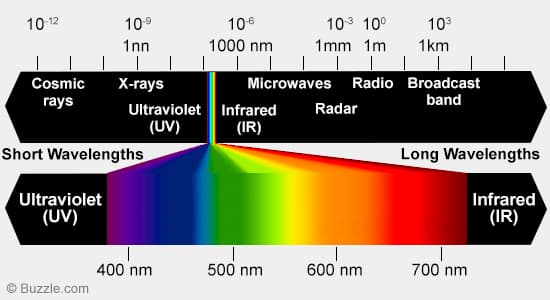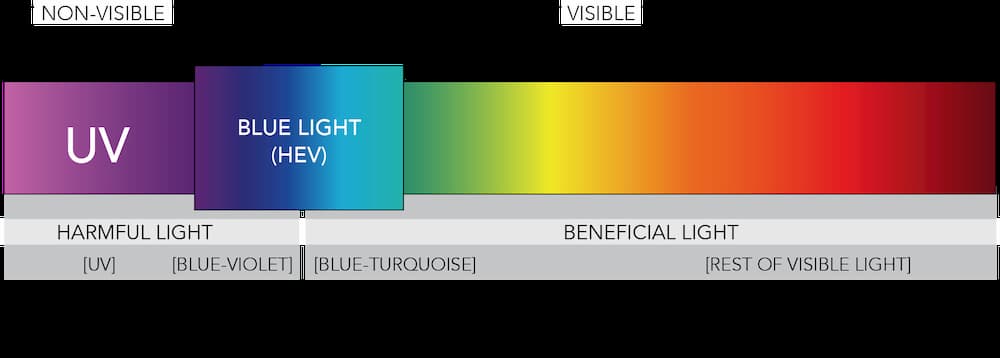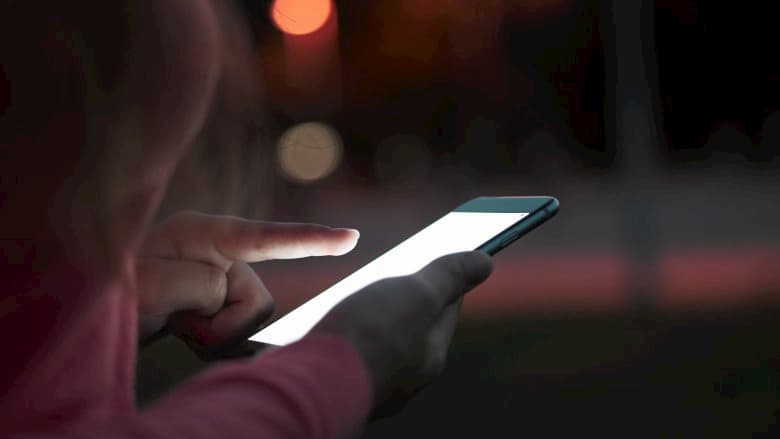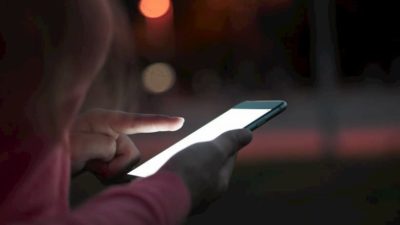“Here he goes again. Blue Light? Now apparently Kyle doesn’t want us to look at anything blue. First, he told me I have to stop complaining, then he wants me to drink acid and now I can’t look at anything blue?! My favorite color is Blue!!” – everyone quietly reading this post
I get it, it sounds crazy. It sounds like I don’t enjoy anything and seem to have an issue with everything, including being negative. But hear me out on this one. I promise I’m not a crazy person just sitting at home trying to figure out ways to ruin your day.

I have no issue with the color blue. Sometimes I feel blue. I even don’t mind that terrible song by Eiffel 65 every now and then. But what I do have an issue with, and you should too, is blue light. Blue light, which can be natural and beneficial for you, can also wreak havoc on your body. But how in the world is blue light bad for you? Let me explain.
What’s the deal with Blue Light
NERD ALERT!! Let’s all take a trip back to high school science class. All light is a form of energy called electromagnetic radiation. While there is a vast spectrum of wavelengths and energies associated with light, the human eye is only able to detect a very small segment. This is known as the visible light spectrum. Visible light ranges in wavelengths from red (740 – 625 nm) to blue (440 – 380 nm). Just in case you’re curious, an nm or nanometer is one billionth of a meter or 0.000000001 of a meter.

As we move from red to blue light in the visible spectrum the energy (frequency) associated with the light is increased. Side note: the highest energy visible light is blue-violet light. When the energy is higher than violet it is considered ultraviolet or UV. I’m almost embarrassed to say that I never put 2 and 2 together or realized that ultraviolet is just Ultra-Violet… Moving on!

Why is Blue light bad?
When we get closer to the UV end of the light spectrum this is where we can start to get into trouble. We all know if you go out into the sun for too long without sunblock you burn, right? What are we getting burned from? UV light. But UV light is not only dangerous to our skin it can also cause a lot of harm to our eyes. The reason they give you those funny little goggles when you go into a tanning bed is to protect your eyes from the UV light that is emitted to tan (burn) your skin. But is all blue light bad?
Benefits – it’s not always bad
The sun emits a spectrum of light that is a pivotal part of us being humans. The higher energy light can cause your body to produce vitamin D3. Also, blue light plays a pivotal role in our circadian rhythm. The circadian rhythm, also known as the sleep-wake cycle, tells our body when it is time to rise and when it is time to rest. Sadly, this is where we start to get into trouble.
Artificial Blue Light
Many of our electronic devices today emit mostly blue light. From your laptop to your flatscreen and phone, we are constantly bombarded with blue light. While people take the necessary precautions when tanning, they hardly think about how the blue light from their smartphones can be affecting their eyes. Blue light has the ability to pass through to cornea of the eye and come into direct contact with the retina. Over time this can lead to macular degeneration, cataracts, and even blindness. While going blind down the road is frightening, blue light can be affecting your health right now.

Many people I speak to usually take some form of blue light to bed with them. For some it’s reading on their iPad, others like to watch TV before they sleep and others want to make sure they don’t miss an email or social media update. Unfortunately, when people are exposed to blue light, especially at night, it can greatly affect your circadian rhythm and sleep quality. “… if blue light is excessive, especially at night when melatonin production peaks, it can not only damage the retina through the ocular surface, but can also stimulate the brain, inhibit melatonin secretion, and increase corticosteroid production, thereby destroying hormonal secretion and directly affecting sleep quality“
What can be done?
- Avoid overexposure to blue light whenever possible. While experiencing a full spectrum of light can be healthy, prolonged exposure to blue light should be avoided
- Night mode. Luckily, most modern smartphones come with a night mode. This will shift the color of your screen from the standard bright blue to an amber color. In some phones, this happens automatically. If your phone does not have this feature, there are a number of free “night mode” apps that you can download.
- Limit screen time after the sun sets. I know this suggestion won’t win over a lot of people. But if you are having a difficult time sleeping, I highly suggest you leave your phone or iPad out of your room. If you are using your phone as an alarm clock… GO BUY AN ALARM CLOCK.
Your challenge
This week I would like for you to limit your screen time after dark. If you insist on using electronics after dark, make sure you have night mode set up on them.
Also, I would like for you to put the phone away, turn off the tv and close your laptop at least 1 hour before bedtime. Either start your nightly routine at this time, or you can listen to music or read a book (a book not a Kindle or tablet). If you normally have trouble falling asleep try reading in bed with dim lighting. Reading in a dimly lit room will not hurt your eyes, it will, however, make them tired. See if that helps you fall asleep any faster, and try to not drop the book on your face.

